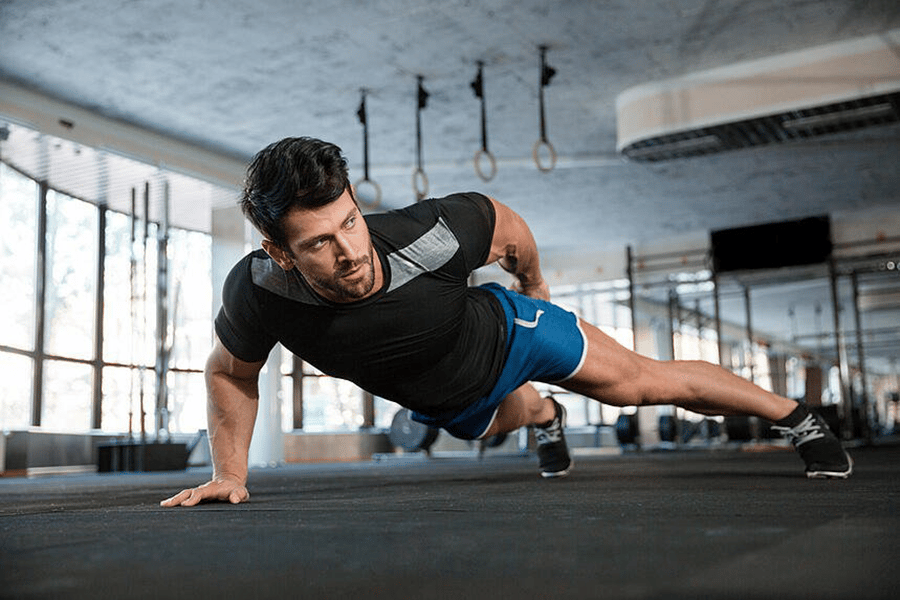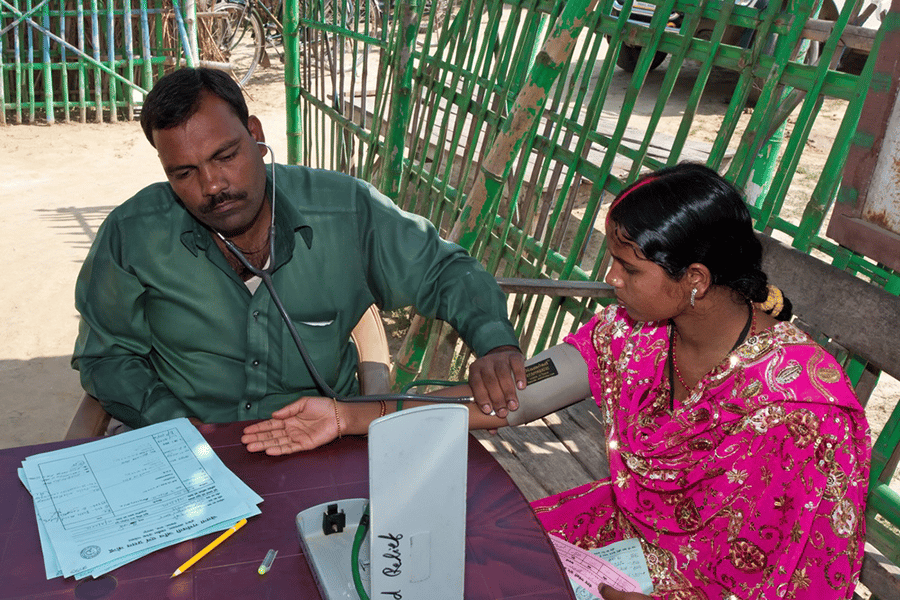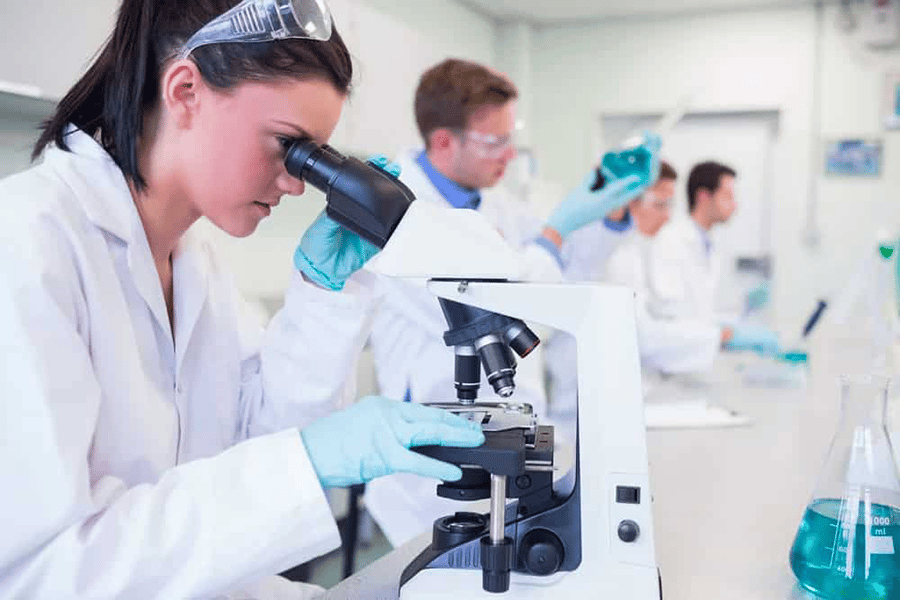Share this
Who benefits from fingerstick microsampling?
by Neoteryx Microsampling on Aug 23, 2021 9:00:00 AM
 Finger-stick sampling is an increasingly popular method of collecting biofluid samples for research laboratories. While the basic concept of finger-stick sampling has existed for decades, recent innovations like Mitra® devices have made it a more viable option for a greater number of people.
Finger-stick sampling is an increasingly popular method of collecting biofluid samples for research laboratories. While the basic concept of finger-stick sampling has existed for decades, recent innovations like Mitra® devices have made it a more viable option for a greater number of people.
Since finger-stick sample collection can be done remotely, this approach enables researchers to reach study volunteers across a wider range of geographical areas.
Portable Mitra devices use volumetric absorptive microsampling technology, which quickly absorbs a precise sample of 2-4 drops of blood or other biofluid, reducing the potential for user error during the sampling process. Mitra devices feature a VAMS® tip on one end that rapidly absorbs the exact volume needed for lab analysis, taking the guess-work out of sample collection.
Finger-stick sampling is minimally invasive and very convenient, making it an appealing alternative to conventional venipuncture blood draws performed in a facility by trained staff. Here are six groups of people that benefit most from finger-stick microsampling:
1. Athletes and Sports Agencies
To keep major sporting events fair, the World Anti-Doping Agency (WADA) requires athletes to undergo blood testing to screen for prohibited substances when competing.

Traditionally, screening athletes was done using a conventional venipuncture blood draw during an in-person appointment with a phlebotomist, under the supervision of a doping control officer.
Due to the restrictions of the COVID-19 pandemic, athletes were recently permitted by some sports agencies like USADA to substitute the in-person specimen collection process in favor of remote microsampling while under observation via live video.
Since athletes aren't trained phlebotomists, they were permitted to use a range of finger-stick blood collection devices designed for easy use by anyone, anywhere. Individuals could collect finger-stick blood samples while on the video call, during which the observing officer also watched them seal their samples into a mailing envelope to prevent any attempts at sample tampering.
This remote and minimally invasive approach makes the anti-doping screening process much more convenient and efficient without compromising reliable results. In fact, finger-stick sampling worked so well in pilot studies with athletes that it was approved for use during future Olympic Games, beginning with the 2021 Olympics in Tokyo.
2. Clinical Research Volunteers
Many people would like to contribute to scientific advances by volunteering for scientific research studies, but their fear of getting poked with needles may hold them back from participating.

Those who do volunteer often abandon a study early, due to "needle fatigue" and also because the expense and stress of traveling back and forth for onsite appointments becomes burdensome.
With finger-stick sampling, clinical trial volunteers can perform their own sample collection at home, and submit their specimen samples via mail. The only needle involved is a tiny lancet to prick their fingertip, after which they use a Mitra device to absorb the 2-4 small drops of blood that form.
This remote microsampling approach removes several of the most common barriers to clinical trial participation and greatly improves the overall participant experience.
3. Elderly and Vulnerable People
Vulnerable patients and study volunteers no longer need to visit clinics or hospitals on a regular basis, which helps lower their risk of infection.
The medical community generally recommends that elderly patients and those with chronic health conditions be offered remote care when possible.
This healthcare delivery method improves access to care when needed, and also reduces the risk of disease exposure in hospital settings — of particular concern for vulnerable populations.
Finger-stick sampling can be used in conjunction with other remote technologies, such as heart monitors and other wearables, to improve the range of virtual care and research activities available for people isolating at home.
In addition to enabling remote monitoring of common chronic conditions like diabetes, this remote approach can be used for routine follow-up with study volunteers during a clinical trial to monitor the effects of medication and make dosing adjustments.
4. Infants and Children
It is sometimes necessary to collect bio-fluid samples from babies and youngsters to detect genetic diseases early and/or to study the effects of certain health conditions and treatments.

Children are often afraid of big needles and the associated pain, and it is difficult to get them to cooperate with a process they find so distressing. Clinicians and research staff sometimes have difficulty getting kids to sit still long enough to draw the required amount of blood.
Microsampling via heel-stick for babies or finger-stick for kids is a much less painful and frightening experience than traditional blood draws that require a needle puncture in a vein of the arm. Although young children may be startled by the mild pain of a quick finger or heel prick, it is over in seconds, and nurses and parents report that the experience is much less traumatic.
A Mitra device can be used to quickly collect the necessary microsample. An added advantage for small-sized study subjects whose health may suffer from big blood draws — a finger-stick microsample is a very low-volume specimen, just 2-4 tiny drops of blood.
5. People in Low-Resource Communities
Many areas of the world still lack the basic infrastructure (such as electricity and plumbing) needed to support local clinics and facilities where blood draws could be conducted.

These areas are often isolated, and locals may lack the means to travel to distant city centers. Traditional blood samples could be collected in the field, but this would require trained staff, and samples would not remain viable during transport without expensive and complicated cold-chain shipping.
With finger-stick sampling, dried blood microsamples can be collected easily using portable devices and at-home collection kits. The samples can be self-collected by study subjects or patients at home, who can follow the illustrated instructions contained in the kit.
Because the collected microsamples are meant to be analyzed as a dried blood sample, they can be sent via mail to a central lab anywhere in the world without cold shipping.
These dried blood samples provide health data that shows excellent correlation when compared to traditional liquid blood samples.
6. Researchers and Lab Managers
Sample collection is a common component of clinical studies, especially in fields such as toxicology and infectious disease.

Unfortunately, the typical venipuncture blood draw process is resource-intensive for research labs and stressful for study volunteers. Few people are eager to sign up for a clinical trial if it means numerous trips to the trial site to have their blood drawn using what may seem like a large and intimidating needle.
Finger-stick sampling is a less daunting and more convenient sample collection method that allows researchers to obtain samples from a wider range of populations than ever before. Mitra devices can be shipped directly to people's homes to allow them to collect their own high-quality samples.
Researchers don’t need additional specimen collection staff to perform these procedures. The improved ease and convenience of participation also makes people more likely to volunteer as trial subjects, increasing the number and diversity of candidates from which researchers can choose.

Share this
- Microsampling (206)
- Research, Remote Research (119)
- Venipuncture Alternative (105)
- Clinical Trials, Clinical Research (83)
- Mitra® Device (73)
- Therapeutic Drug Monitoring, TDM (51)
- Dried Blood Spot, DBS (39)
- Biomonitoring, Health, Wellness (30)
- Infectious Disease, Vaccines, COVID-19 (24)
- Blood Microsampling, Serology (23)
- Omics, Multi-Omics (21)
- Decentralized Clinical Trial (DCT) (20)
- Specimen Collection (18)
- Toxicology, Doping, Drug/Alcohol Monitoring, PEth (17)
- Skin Microsampling, Microbiopsy (14)
- hemaPEN® Device (13)
- Preclinical Research, Animal Studies (12)
- Pharmaceuticals, Drug Development (9)
- Harpera Device (7)
- Industry News, Microsampling News (5)
- Antibodies, MAbs (3)
- Company Press Release, Product Press Release (3)
- Environmental Toxins, Exposures (1)
- July 2025 (1)
- May 2025 (1)
- April 2025 (2)
- December 2024 (2)
- November 2024 (1)
- October 2024 (3)
- September 2024 (1)
- June 2024 (1)
- May 2024 (1)
- April 2024 (4)
- March 2024 (1)
- February 2024 (2)
- January 2024 (4)
- December 2023 (3)
- November 2023 (3)
- October 2023 (3)
- September 2023 (3)
- July 2023 (3)
- June 2023 (2)
- April 2023 (2)
- March 2023 (2)
- February 2023 (2)
- January 2023 (3)
- December 2022 (2)
- November 2022 (3)
- October 2022 (4)
- September 2022 (3)
- August 2022 (5)
- July 2022 (2)
- June 2022 (2)
- May 2022 (4)
- April 2022 (3)
- March 2022 (3)
- February 2022 (4)
- January 2022 (5)
- December 2021 (3)
- November 2021 (5)
- October 2021 (3)
- September 2021 (3)
- August 2021 (4)
- July 2021 (4)
- June 2021 (4)
- May 2021 (4)
- April 2021 (3)
- March 2021 (5)
- February 2021 (4)
- January 2021 (4)
- December 2020 (3)
- November 2020 (5)
- October 2020 (4)
- September 2020 (3)
- August 2020 (3)
- July 2020 (6)
- June 2020 (4)
- May 2020 (4)
- April 2020 (3)
- March 2020 (6)
- February 2020 (3)
- January 2020 (4)
- December 2019 (5)
- November 2019 (4)
- October 2019 (2)
- September 2019 (4)
- August 2019 (4)
- July 2019 (3)
- June 2019 (7)
- May 2019 (6)
- April 2019 (5)
- March 2019 (6)
- February 2019 (5)
- January 2019 (8)
- December 2018 (3)
- November 2018 (4)
- October 2018 (7)
- September 2018 (6)
- August 2018 (5)
- July 2018 (8)
- June 2018 (6)
- May 2018 (5)
- April 2018 (6)
- March 2018 (4)
- February 2018 (6)
- January 2018 (4)
- December 2017 (2)
- November 2017 (3)
- October 2017 (2)
- September 2017 (4)
- August 2017 (2)
- July 2017 (4)
- June 2017 (5)
- May 2017 (6)
- April 2017 (6)
- March 2017 (5)
- February 2017 (4)
- January 2017 (1)
- July 2016 (3)
- May 2016 (1)
- April 2016 (2)


No Comments Yet
Let us know what you think